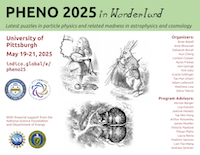Speaker
Description
Blazars are a subclass of active galactic nuclei (AGN), the brightest continuously emitting sources in the Universe, powered by accreting supermassive black holes (SMBH). Their defining characteristic is the presence of powerful, back-to-back relativistic jets of protons and electrons, with one jet closely aligned in the direction of Earth. This offers a unique opportunity to probe physics Beyond the Standard Model. The jet can in fact interact with the surrounding Dark Matter in the host galaxy’s halo, where the presence of the SMBH induces a spike in density, offering compelling direct and indirect detection prospects. A key signature of this interaction is the production of high-energy neutrinos, as secondary products of the proton disintegrating in the collision. The resulting outgoing neutrino flux is qualitatively and quantitatively different from the one expected via Standard Model processes alone and, notably, provides a better fit to observations for a large region of unexplored light Dark Matter parameter space. This raises the intriguing question of whether high-energy neutrino observations from blazars could represent the first indirect detection of Dark Matter.

